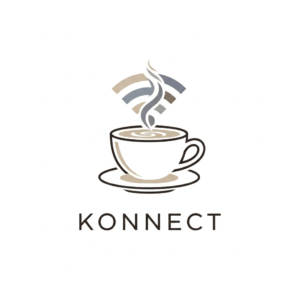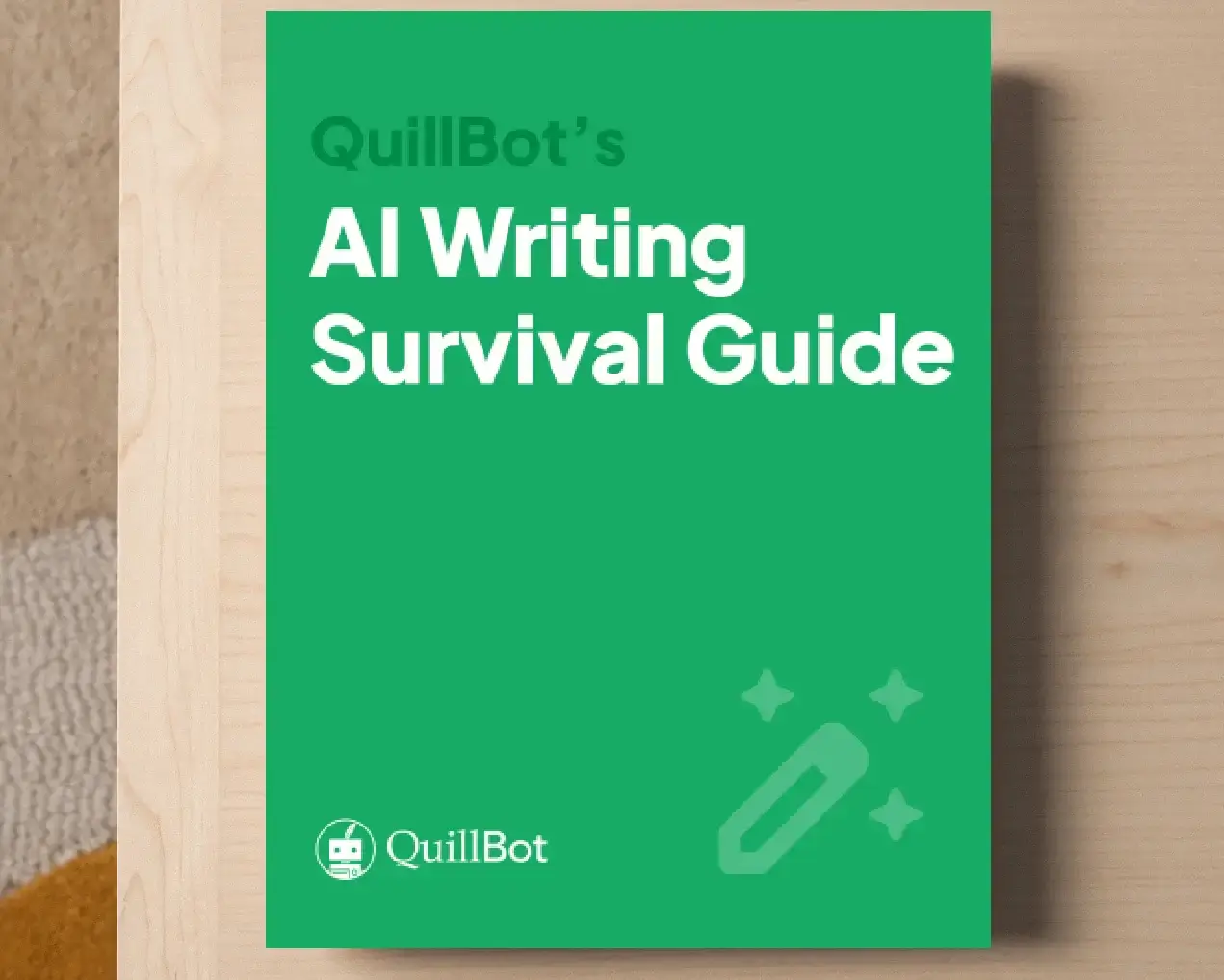How to Design a Logo | 10 Tips for Great Logos

A logo is one of the most important elements of any brand or business. You’ll use it everywhere, and it’s the image that people will most closely associate with your brand. So, a good logo should communicate the purpose and personality of your brand in a split second.
Since logos are so important, it’s critical you understand how to design a logo, whether you plan to do it yourself or hire someone to do it. If working with a designer, knowing what makes a good logo lets you collaborate in the design process. If you plan to design your own logo, it’s important to understand the theory behind logo design.
Thankfully, there are many tools nowadays that can kickstart your logo design process, like QuillBot’s AI logo generator. Use the logo generator to brainstorm ideas, create mockups, experiment with colors and composition, and work out what you like and don’t like in a logo.
What makes a good logo
Before you learn how to design a logo, you should start with understanding what makes a good logo. There are five core concepts that, when combined, make a great logo:
- Relevance: A logo should communicate what a brand is all about. Choose colors, fonts, and icons according to what your brand does or makes.
- Personality: Your logo should transmit your brand’s vibe and tone (e.g., playful, classic, or edgy). This should be consistent with other elements of your brand identity, like packaging, social media, and customer service tone.
- Versatility: A great logo is scalable and looks crisp and clear at any size. It should also look great across contexts (e.g., on a newsletter email header and stamped on a t-shirt).
- Timelessness: Keep your logo simple and shy away from overly trendy designs. A simple logo will better stand the test of time than something that relies too heavily on what’s cool right now. Simpler logos (e.g., Google or Apple) are also easier to update than complicated ones if design standards do change.
- Memorability: A great logo is eye-catching and easy to recognize and remember. It should also help your brand stand out from others in the market.
10 logo design tips
Below are 10 logo design tips to help you better understand how to design a logo, plus good logo design examples.
1. Source inspiration
Before designing your logo, source some inspiration. Some strategies for this are:
- Research competitors and your industry. See what colors, fonts, themes, and shapes they use in their logos.
- Collect examples of logos you admire. Even if they’re not in your industry, other brands’ logos can help you notice what you like and what you don’t. You can find these online, but you should also pay attention to signs, ads, billboards, product packaging, and other places you see logos in everyday life. This way, you consider logos in different contexts.
- Brainstorm your brand personality. Think of stylistic or thematic concepts related to your brand. If this is difficult, try thinking of your brand as a person and describe how they are. Are they modern? Classic? Punky? Elegant? Smart? Playful? Make a list or mind map of qualities your brand embodies.
Once you have a collection of logos and ideas that inspire you, look for common themes and patterns. Reflect on why you like certain logos. Being able to clearly explain why you like or don’t like a logo will help you get a clearer idea of the direction you need to go in.
2. Understand designer workflows
It’s important to know how graphic designers work in case you choose to collaborate with one. Even if you don’t work with a designer, following this workflow helps you think systematically.
The designer workflow usually looks like:
- Search. Look for designers in your area, ask for recommendations, and check social media and freelance websites (e.g., Behance or Upwork).
- First meeting. Bring your inspiration and clearly communicate your needs and expectations. Ask questions to understand how the designer works.
- Contract definition. Once you find a designer you like, define the terms of your agreement: deliverables, price, and terms and conditions.
- Discovery. Designers usually have a “discovery” process, which helps them better complete their work. They may ask you for a detailed brief, a success statement, a list of nouns or verbs that identify your brand, or other information to help them understand what you’re all about.
- Design. The designer will work on your logo. Respect the agreed-upon timeframes, but keep communication open and transparent.
- Feedback. Once the logo is done, it’s your turn to weigh in. Keep feedback constructive, specific, and actionable. If you don’t like something, that’s fair; however, you should be able to explain exactly why you don’t like that element.
3. Embrace negative space
Negative space is the empty space in your logo. It helps keep your logo clean and readable. But negative space can also cleverly add visual interest or subtle symbolism to your logo. Think of what shapes, actions, and feelings you could evoke with the negative space of your logo. The FedEx logo does this well; look for the subtle arrow between the “E” and the “x.”
4. Choose colors and fonts mindfully
Color theory is the study of how colors affect us psychologically and emotionally. Different colors suggest different things: green represents growth, black sophistication, and orange creativity. Analyze colors and see which ones best align with what your brand represents.
Likewise, typography also sends implicit signals to people’s psyches. Serif fonts imply tradition, while sans-serifs lean into modernity. Handwritten fonts can add a creative or quirky feel to your logo, and slab serifs add strength and reliability.
5. Try caps and lowercase
Another simple way to shape your brand’s personality is by experimenting with all caps versus lowercase letters:
- All caps feel bold, professional, and authoritative. They’re great for brands that want to transmit strength and confidence.
- Lowercase feels approachable, casual, and modern. It’s good for brands aiming for friendliness, warmth, or minimalism.
- Title case (capitalizing the first letter) is balanced. It yields a clean yet approachable feeling.
Testing different letter cases helps you see how subtle changes in typography can shift a brand’s tone. For example, Sony uses all caps—and a serif font—to convey authority, reliability, and confidence.
6. Consider literal and abstract design elements
Decide whether your logo will depict something literal (e.g., a coffee cup for a café) or abstract (e.g., three overlapping shapes for a surf brand). Both literal and abstract design elements can work well as long as they tie back to your brand’s story.
One brand that uses an abstract symbol is Airbnb. The icon subtly represents people (arms reaching up), places (a location pin), and love (an upside-down heart). It also looks like an “A,” which connects back to the brand name.
7. Play with contrast
Contrast is a key principle in logo design because it helps your logo stand out and remain legible across different sizes and backgrounds. This can include:
- Color: Pair light and dark colors, or complementary hues, to make elements pop.
- Shape: Combine thick and thin lines, or geometric versus organic shapes, to add visual interest.
- Size: Make the icon larger than the text or emphasize one letter or element to guide the viewer’s eye.
Strong contrast helps make your logo attention-grabbing, memorable, and recognizable, even at a glance.
8. Don’t overload your visuals (fonts, colors, etc.)
Too many fonts, colors, or icons make a logo messy. Simplicity is essential for a logo that works in every context and stays timeless. Limit yourself to one or two fonts, stick to two or three colors for your brand, and avoid unnecessary details that don’t reinforce your brand story.
9. Deviate from the competition
One of the most effective ways to make your logo memorable is to break from the patterns in your industry. This not only helps your brand stand out visually but also reinforces your unique personality and value proposition.
For example, if you run a law firm and all other law firms use serious, neutral logos with serif fonts, consider playing with color or a different font type to help your brand stand out.
10. Ensure readability in different contexts and formats
Logos with text must remain clear on everything from business cards to mobile apps. Avoid fonts or designs that blur at small sizes or lose resolution at large ones, and make sure your logo has enough contrast so people can distinguish its different elements.
When you have a logo design you’re happy with, try it out in different contexts and formats:
- Size it up
- Size it down
- Convert it to black and white
- Check it on desktop and mobile screens
- Try it on different background colors
- Print it out
Doing this will help ensure that the logo works across situations without sacrificing clarity or recognizability.
How to design a logo with AI
Experimenting with AI when designing logos can save you time and energy and give you access to creative tools you might not have otherwise. That said, something as important as your brand’s logo shouldn’t rely entirely on AI. While AI can help you brainstorm, experiment, and decide what you like in a logo, you (or a designer) should create the finalized version.
Follow these steps below to use AI to assist in your logo design process.
Step 1: Prepare your prompt
The more specific your prompt, the better AI can generate images that reflect your brand’s personality. So, before prompting, define your brand identity clearly. Consider details like:
- Your brand name
- What your brand does
- Your brand mission and values
- Your target audience
- The vibe you’re going for
- Any specific colors, fonts, or elements you want to use
“Create a logo of a coffee cup creating a WiFi symbol with its steam. Use neutral tones: beige, white, gray, etc. Put the name of my café (Konnect) beneath the coffee cup in a clean, sans-serif font. My target audience is young, professional, middle-class people who want a calm café where they can work and drink tasty coffee at the same time.”
Step 2: Choose style and aspect ratio
The AI image generator lets you choose the style (e.g., artistic or educational) and aspect ratio of your logo. For logos, a good aspect ratio is 1:1 (to create a square image) or 4:3 (to create a landscape image). If you’re not sure, you can leave these on “auto” to let the AI tool choose what it considers best.
Step 3: Generate and iterate
Click “generate” and review the output. If it’s not what you imagined, iterate on it by refining your prompt. You may need to add more context about what your brand does, specific colors or fonts to use, how to position and space elements, etc.
It could maybe use a pop of color, and the brand name may look better in all lowercase to suggest informality and warmth. The design also looks a bit outdated; maybe giving AI better instructions would get it closer to a more modern aesthetic. You could iterate on the example prompt by adding some more details (with changes in bold):
“Create a minimalist logo of a coffee cup creating a WiFi symbol with its steam. Use neutrals and a maximum of 2 accent colors; I like warm, coffee-colored browns and muted, inviting teals. Put the name of my café (konnect) beneath the coffee cup in a clean, sans-serif font in all lowercase letters (no capital “K”). My target audience is young, professional, middle-class people who want a calm café where they can work and drink tasty coffee at the same time, and I want the logo to emulate this feeling. The design should be flat, vector-style, with a transparent background, and have a modern look and feel.”
With this refined prompt, the AI logo generator created:
Iterating like this helps you brainstorm and experiment, and using AI to decide what you like and what you don’t like helps you get closer to a strong end design. Save all the AI images; ideas you don’t like may help spark good ideas later on.
Frequently asked questions about how to design a logo
- What are some good logo fonts?
-

Good logo fonts are distinctive, scalable, and legible across different sizes and contexts. Choosing a font is one of the most important steps when you design a logo.
Popular fonts include sans-serifs (e.g., Futura, Helvetica) for clean looks, serifs (e.g., Bodoni, Didot) for elegance, and slab serifs (e.g., Rockwell, Museo Slab) for strength. Scripts (e.g., Pacifico, Satisfy) add creativity, while display fonts (e.g., Bebas Neue, Rift) make bold statements.
Try QuillBot’s AI logo generator to experiment with what fonts look good for your brand.
- What size should a logo be?
-

Logos don’t have one fixed size; they should scale for different uses. When learning how to design a logo, you’ll find that this is one of the most important qualities of a logo.
A common size for a website logo is about 250–400 pixels wide by 70–100 pixels high. You can really design your logo in any size, but make sure you do so in vector format (e.g., SVG) so it looks sharp if you shrink or enlarge it.
QuillBot’s AI logo generator can help you experiment with different logo sizes.
Cite this Quillbot article
We encourage the use of reliable sources in all types of writing. You can copy and paste the citation or click the "Cite this article" button to automatically add it to our free Citation Generator.
Santoro, K. (2025, October 10). How to Design a Logo | 10 Tips for Great Logos. Quillbot. Retrieved December 7, 2025, from https://quillbot.com/blog/image-tools/how-to-design-a-logo/



